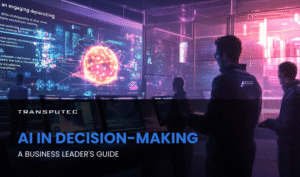IT infrastructure management can make or break a business’s success. It is a highly crucial factor that is often overlooked by many businesses. However, it can also be one of the most difficult to get right.
The efficiency of a business depends on how well-implemented the IT infrastructure is. IT infrastructure management uses a holistic approach by overseeing the usage of various IT processes and resources. Hardware, software, and the network are the three most important components of IT infrastructure. It’s also important to consider that IT infrastructure will have an impact on the entire business.
There are two main types of IT infrastructure that are typically used: traditional and cloud. The traditional infrastructure approach involves managing all the equipment and resources within the business itself.
On the other hand, cloud infrastructure has emerged in recent years and provides a more effective alternative. Cloud computing uses hardware and software components, which include processing power and storage. The main difference between traditional and cloud infrastructure is that cloud infrastructure involves having the hardware and software digitally, whereas traditional would have these components physically within the business itself.
Cloud Infrastructure
Using cloud infrastructure for IT infrastructure has seen a massive rise in popularity in recent years, replacing the traditional approach. It provides a more economically viable solution to IT infrastructure implementation, along with various other benefits.
There are three primary cloud infrastructure models used to deliver cloud computing:
- Service-as-a-software (SaaS): SaaS is a widely used model for cloud services. The SaaS supplier is responsible for both the installation and maintenance of the software. Moreover, SaaS eliminates all hardware maintenance and software licensing costs. There is no need to constantly buy new software because of the automatic installation of updates.
- Infrastructure-as-a-software (IaaS): IaaS is a low-cost concept that provides IT infrastructure components digitally. This means that running workloads is a lot faster, and it also serves as an excellent tool to manage workloads used for testing. This model focuses on having hardware that would normally be physically present, but taking a virtual approach instead.
- Platform-as-a-software (PaaS): PaaS focuses on delivering hardware and software tools virtually. Although it doesn’t replace a business’s entire infrastructure, it still serves as a convenient way of taking a lot of the aspects of IT infrastructure. The biggest advantage of PaaS is the simplicity that it provides when it comes to dealing with IT infrastructure.
Each of the three cloud infrastructure models focuses on different aspects of the IT infrastructure.
The meteoric rise of cloud computing has meant that the traditional IT infrastructure approach is decreasing as time goes on, with 44% of the UK population currently using cloud services. This trend of increasing usage of cloud services is only expected to continue as time goes on.
Benefits of IT Infrastructure Management
IT infrastructure management provides various benefits that make it a worthwhile investment. One of the biggest benefits includes cost savings. Proper IT infrastructure management will help you handle unforeseen disruptions. Some disasters could lead to long-term damages that are difficult to recover from. Such examples could include hardware and software failures. This is along with viruses that can affect the entire IT infrastructure.
Effective IT infrastructure management will allow you to mitigate the impact of the aforementioned disasters. It also reduces the chance of long downtimes and data loss occurring. Additionally, proper IT infrastructure management will allow you to back up your business’s data and restore it quickly. This leads to reduced downtime, improving the user experience.
How can IT Infrastructure Management Impact Your Business?
The overall productivity of your business will increase from effective IT infrastructure management. System monitoring will allow you to detect any performance issues. As a result, this will increase your awareness of any limitations or areas of improvement in your business’s technology. Employees will also have much higher morale when working with optimised and efficient systems. It acts as a means of improving both customer and employee satisfaction.
Dealing with new challenges that arise in your new business is much easier when you have an optimised IT infrastructure through effective management. Flexibility to deal with new conditions and changes is vital, as unexpected issues can come up at any time. Effective monitoring systems will also allow you to make well-informed decisions that will have a positive impact on your business.
Moreover, one huge advantage of making well-informed decisions and being able to deal with any new challenges is being able to drastically reduce IT costs. Poor IT infrastructure
management can lead to decreased productivity, increased downtime and increased vulnerability to cyberattacks.
The Impact of Using Old Systems in Your Business
IT infrastructure management has a plethora of advantages, but it can be difficult to implement. Systems can become outdated relatively quickly, making it important that you always monitor the performance of your current systems.
Maintenance of older systems can become increasingly difficult as time goes on, as updates may become infrequent or discontinued entirely. The previous system may have a lot of data, making migration challenging. However, the difficulties of maintaining and upgrading older systems necessitate it. This is despite the issue of having to transfer large amounts of data.
Cybersecurity is an additional concern with older systems. Obsolete security systems have heightened susceptibility. Hence, cybercriminals can successfully target older computers.Data breaches are also much more likely to occur, and result in massive damage and expenses. With cyberattacks becoming increasingly common, using older systems has become a massive risk. Approximately 52 million data breaches occurred in the second quarter of 2022.
It’s important to take action immediately if your business is using older systems, as there are various implications that can occur otherwise. Many businesses are turning to cloud services as a viable alternative due to the flexibility and convenience they provide. The level of security with cloud services is much higher, and users get upgrades on a regular basis. Cloud service models such as IaaS are highly secure and scalable.
How can you Improve Your Business’s IT Infrastructure Management?
IT infrastructure management is vital to your business’s efficiency and success. Unexpected disasters and issues can occur at any time. Effective IT infrastructure management will mean that your business will be much more equipped and prepared to deal with these occurrences, reducing the cost of damage.
Moreover, employee and customer satisfaction will increase as a result. Your employees are able to be much more productive using highly optimised systems, increasing their morale at the same time. This will lead to increased cohesion and efficiency in your business.
Using older systems can have severe consequences, due to a lack of updates as well as maintenance difficulty. This will result in your business’s security being more vulnerable to cyberattacks, which can have devastating consequences. Data breaches are increasingly common, and will incur costs in terms of recovering from the damages.
Cloud services are a popular alternative to the traditional approach to IT infrastructure that many businesses have adopted. In particular, IaaS serves as a cost-efficient method of having IT infrastructure components through the cloud. Transputec provides IaaS services that manage your business’s IT infrastructure in a highly secure and easily scalable manner. Additionally, there is the advantage of less downtime and 24/7 assistance.
Contact Transputec to find out more about how we can help you set up IaaS to make your IT infrastructure management more efficient.







